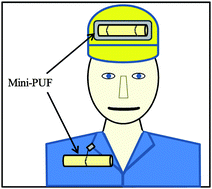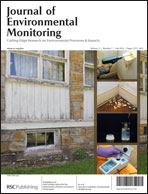Field evaluation of a passive personal air sampler for screening of PAH exposure in workplaces†
Abstract
New sampling methods are needed to simplify and enable frequent monitoring of workers' exposure to polycyclic aromatic hydrocarbons (PAHs). The sampler needs to fulfil some key operational requirements for occupational exposure assessments: (i) be useable as a personal sampler; (ii) work over 8 h exposure time; (iii) sequester PAHs both in gas and particle phase, (iv) yield reliable estimates of air concentrations. Here, a new smaller design of the traditional polyurethane foam (PUF) passive air sampler (


 Please wait while we load your content...
Please wait while we load your content...